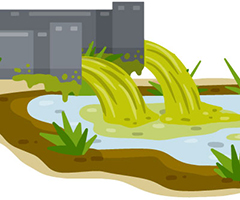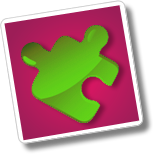Chemicals and Pollutants

It might surprise you to learn that chemicals from products we use every day can eventually end up in our water. Just look around your home. Do you see any batteries, paint, or medicines? If you don’t get rid of these products correctly, they can cause chemicals to end up in the water supply. In fact, your water can be affected by chemicals and pollutants close by and far away from your home.
How does this happen? Runoff is water from rain or melted snow that isn’t absorbed by the ground. Instead, it runs over the ground and loose soil, picking up pollution and carrying it into ponds, lakes, streams, rivers, and coastal areas. Water can be polluted by urban, industrial, or agricultural runoff. Examples of water pollutants from runoff include:
- Heavy metals and chemicals from construction sites and factories
- Oil, grease, and chemicals from our cars and trucks
- Pesticides and fertilizers from our lawns and gardens
Our drinking water can be affected by chemicals and pollution from runoff. Swimming or playing in polluted water can also make us sick.
Some content courtesy of the National Library of Medicine.

Other stuff you might like ...
Games & Puzzles
Did you know there are two types of water pollution: point source and nonpoint source? Point source pollution comes from a specific source, like a factory pipe, and is easy to identify. Nonpoint source pollution comes from many different sources, such as melting snow and rainwater running over the ground.

